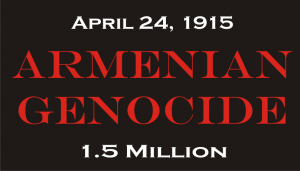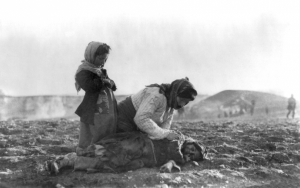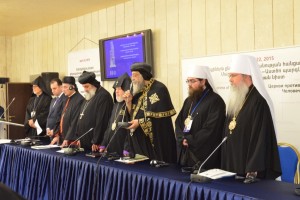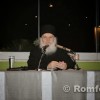April 24, 2013
 On April 24 Armenians worldwide as well as many states commemorate the 98th anniversary of the Armenian Genocide.
On April 24 Armenians worldwide as well as many states commemorate the 98th anniversary of the Armenian Genocide.
Hundreds of thousands of Armenians will go to Tsitsernakaberd Memorial in Yerevan to remember the victims of the Armenian Genocide.
Turkey denies the fact of Armenian Genocide.
The Armenian Genocide has been recognized and condemned by Uruguay (1965), the Republic of Cyprus (1982), Argentina (1993), Russia (1995), Canada (1996), Greece (1996), Lebanon (1997), Belgium (1998), Italy (2000), Vatican (2000), France (2001), Switzerland (2003), Slovakia (2004), The Netherlands (2004), Poland (2005), Germany (2005), Venezuela (2005), Lithuania (2005), Chile (2007), Sweden (2010). The Armenian Genocide has also been recognized and condemned by Vatican, the Council of Europe and the World Council of Churches.
The atrocities committed against the Armenian people of the Ottoman Empire during WWI are defined as the Armenian Genocide.
Those massacres were perpetrated throughout different regions of the Ottoman Empire by the Young Turkish Government which was in power at the time.
The first international reaction to the violence resulted in a joint statement by France, Russia and Great Britain, in May 1915, where the Turkish atrocities directed against the Armenian people was defined as “new crime against humanity and civilization” agreeing that the Turkish government must be punished for committing such crimes.
Why was the Armenian Genocide perpetrated?
When WWI erupted, the Young Turk government, hoping to save the remains of the weakened Ottoman Empire, adopted a policy of Pan Turkism – the establishment of a mega Turkish empire comprising of all Turkic-speaking peoples of the Caucasus and Central Asia extending to China, intending also to Turkify all ethnic minorities of the empire. The Armenian population became the main obstacle standing in the way of the realization of this policy.
Although the decision for the deportation of all Armenians from the Western Armenia (Eastern Turkey) was adopted in late 1911, the Young Turks used WWI as a suitable opportunity for its implementation.
How many people died in the Armenian Genocide?
There were an estimated two million Armenians living in the Ottoman Empire on the eve of WWI. Approximately one and a half million Armenians perished between 1915 and 1923. Another half million found shelter abroad.
The mechanism of implementation
Genocide is the organized killing of a people for the express purpose of putting an end to their collective existence. Because of its scope, genocide requires central planning and an internal machinery to implement. This makes genocide the quintessential state crime, as only a government has the resources to carry out such a scheme of destruction.
On 24th of April in 1915, the first phase of the Armenian massacres began with the arrest and murder of nearly hundreds intellectuals, mainly from Constantinople, the capital of Ottoman Empire (now Istanbul in present day Turkey). Subsequently, Armenians worldwide commemorate the April 24th as a day that memorializes all the victims of the Armenian Genocide.
The second phase of the ‘final solution’ appeared with the conscription of some 60.000 Armenian men into the general Turkish army, who were later disarmed and killed by their Turkish fellowmen.
The third phase of the genocide comprised of massacres, deportations and death marches made up of women, children and the elderly into the Syrian deserts. During those marches hundreds of thousand were killed by Turkish soldiers, gendarmes and Kurdish mobs. Others died because of famine, epidemic diseases and exposure to the elements. Thousands of women and children were raped. Tens of thousands were forcibly converted to Islam.
Finally, the fourth phase of the Armenian genocide appeared with the total and utter denial by the Turkish government of the mass killings and elimination of the Armenian nation on its homeland. Despite the ongoing international recognition of the Armenian genocide, Turkey has consistently fought the acceptance of the Armenian Genocide by any means, including false scholarship, propaganda campaigns, lobbying, etc.
Source: Panorama.am



















